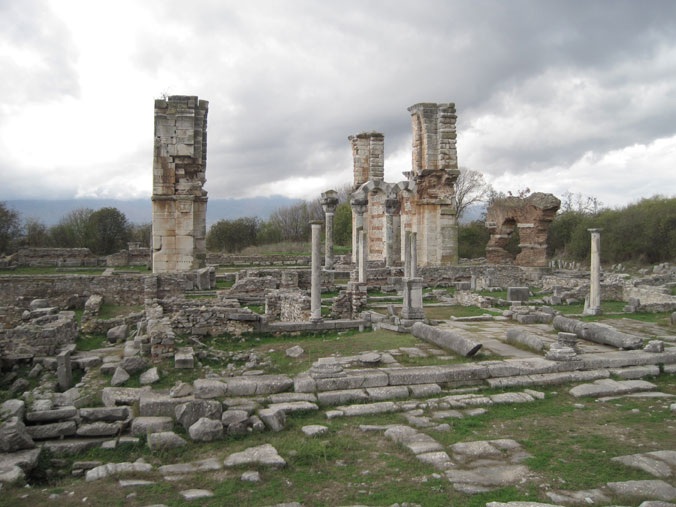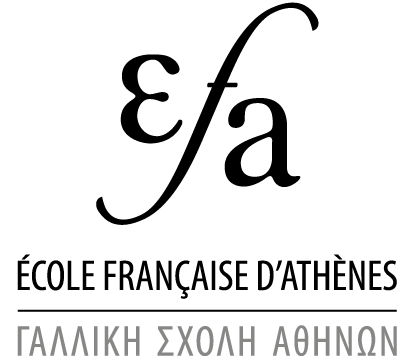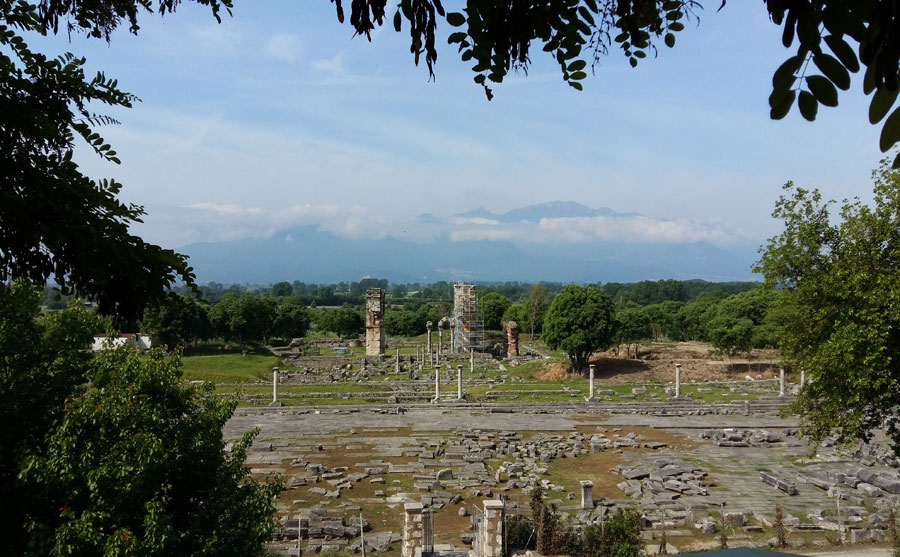A site between East and West
The site of Philippi is located in northern Greece, in the region of eastern Macedonia, around 160km east of Thessaloniki, between the towns of Kavala and Drama. A Greek city founded in an area inhabited by Thracians, later colonised by the Romans and visited by the Apostle Paul, for centuries Philippi was at the crossroads between East and West, on the main route that led from Italy to Asia Minor via Byzantium.
The royal foundation
The region where the site of Philippi is located was, in the Archaic period, inhabited by the Thracians, an Indo-European people living in the southeast of the Balkan peninsula. Subsequently Greeks came from the neighbouring island of Thasos and took up residence in the area, attracted by the mineral resources of the mountains that surround the plain of Philippi. An initial foundation, named Krenides (‘The Springs’) was then created in 360 BC at what was the future site of Philippi. The Thasian foundation was conquered four years later by the king of Macedonia Philip II, father of Alexander the Great, who gave his name (‘Philippi’) to the new city that he founded there.
The Roman colony
Philippi became one of the most important cities in the eastern part of the Macedonian kingdom. Before its walls took place, in 42 BC, one of the decisive battles in the Roman civil wars, between Brutus and Cassius, Caesar’s assassins, and his heirs, Antony and Octavian (the future Augustus). After the battle, in which he was victorious, Antony installed his veterans in the Macedonian city’s vast territory. From then on Philippi became a Roman colony, where Latin replaced Greek as the official language and the Roman soldiers’ descendants monopolised power.
The Christian town
The Via Egnatia, the chief land transportation route between the western and eastern parts of the Roman empire, ran through Philippi, situated as it was close to the Anatolian peninsula. On his way from Asia Minor the Apostle Paul visited the colony on several occasions in the 40s and 50s BC and spread the new religion there, initially amongst the local Jewish population. Thus Philippi was the home of the first Christian community in Europe, and large basilicas were built between the 4th and 6th centuries, modeled on the churches in Constantinople.

The site's rediscovery
Abandoned in the 14th century, the site was described by a number of different travellers from the Renaissance onwards and first studied by Léon Heuzey in 1861. It was only at the beginning of the 20th century that it began to be the object of systematic inquiry, by the French School at Athens, which organised an initial study expedition in 1914. In the interwar period, major excavations brought to light the Roman colony’s monumental centre and the Christian basilicas. Since the 1950s, the work of the French School at Athens has been supplemented by that of the Greek Archaeological Services, the Archaeological Society of Athens, and the University of Thessaloniki. The recent construction of a bypass road round the archaeological site means that it is possible to look forward in the years to come to new excavations on a large scale in the centre of the ancient town.
Summary chronology
| 680 BC | Foundation of the colony of Thasos by people from Paros in the Cyclades |
| 7th century BC | Thasian influence in the region, which was then inhabited by Thracian tribes |
| 360 BC | Foundation of Krenides by Thasians |
| 356 BC | Capture of Krenides by Philippi II and foundation of the city of Philippi |
| 42 BC | Battle of Philippi in the Roman civil wars and foundation of the Roman colony |
| AD 40-50 | Visits of the Apostle Paul |
| 4th-6th centuries | Several Christian basilicas are built |
| 14th century | The site is abandoned |
| 1861 | Travels of Léon Heuzey |
| 1914 | First expeditions of the French School at Athens |
| 1930-1937 | Systematic excavations of the monumental centre of the ancient town by the French School at Athens |

